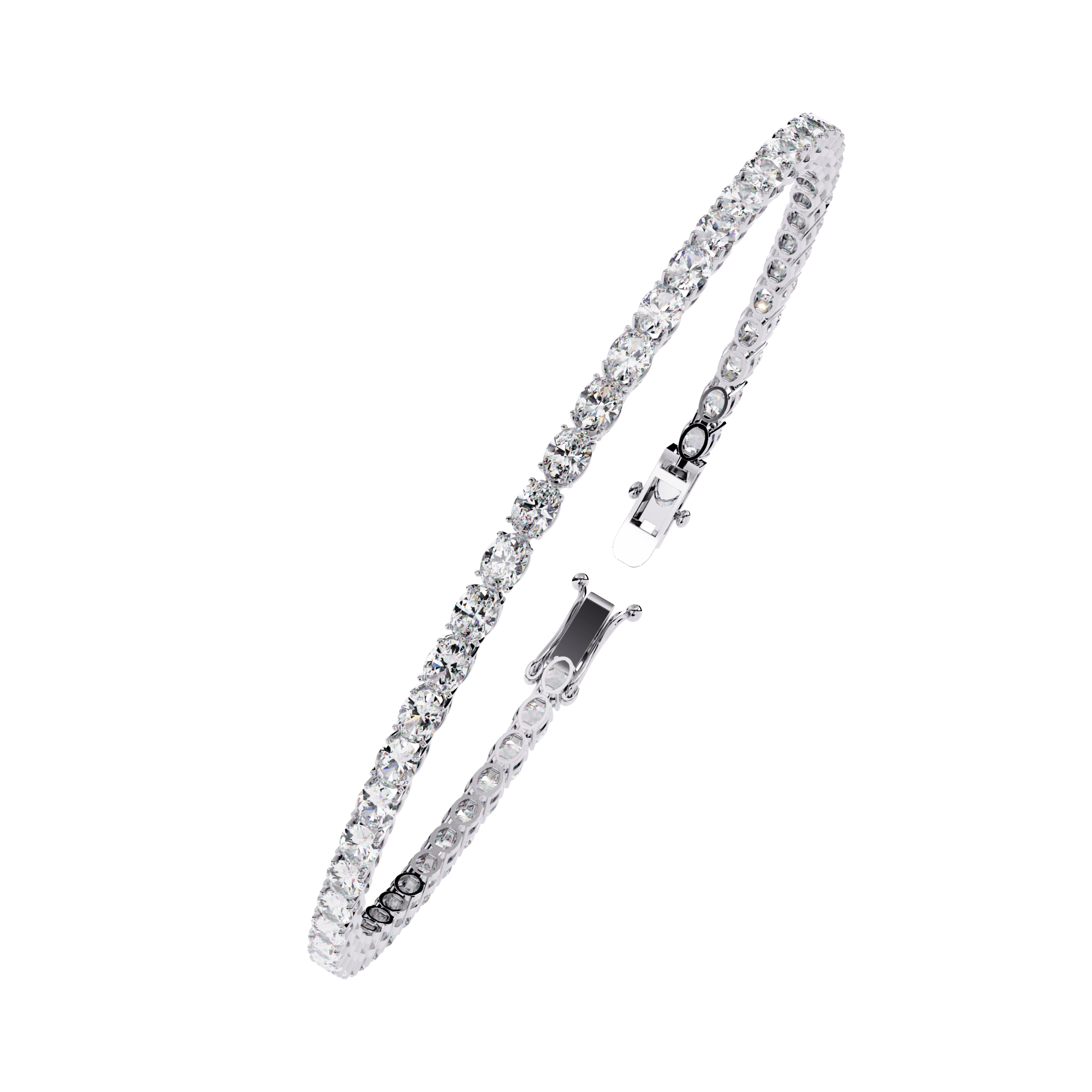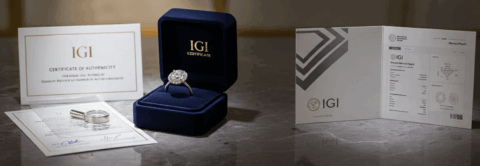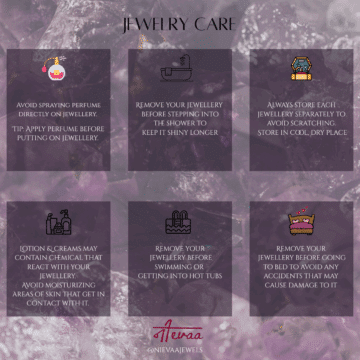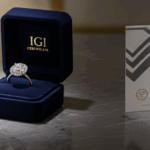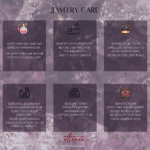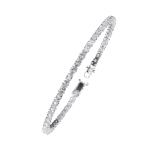“Ever dreamed of that endless circle of sparkle around your wrist or neck? You see it everywhere—the iconic diamond tennis bracelet. But turning that dream into a reality can be overwhelming. That’s why we’ve created the definitive diamond tennis bracelet buying guide to demystify the entire process.
We’ll break down exactly what matters, using insights we’ve gathered from helping hundreds of clients. This is more than just a blog post; it is a complete diamond tennis bracelet buying guide.
You don’t need to be a diamond expert. You just need a clear, honest strategy, which this diamond tennis bracelet buying guide provides.
You’re suddenly drowning in jargon. 4Cs, CTW, VVS1, G-H color, platinum vs. gold. It feels like you need a gemology degree just to make a smart choice.
What if you overpay?
What if you choose the wrong thing?
Stop worrying. This diamond tennis bracelet buying guide is for you.
We’re going to demystify the entire process. We’ll break down exactly what matters (and what doesn’t) when buying diamond line jewelry, using insights we’ve gathered from helping hundreds of clients make this exact decision.
You don’t need to be a diamond expert.
You just need a clear, honest strategy.
This is your step-by-step guide to diamond tennis bracelet buying guide and getting the most fire, brilliance, and value for your budget. We’ll cover how to strategically balance the 4Cs, the crucial debate between natural and lab-grown diamonds, and how to choose the right metal for a lifetime of wear.
Ready to become a confident diamond buyer?
Let’s begin.
Part 1: The Foundation of Forever – Choosing Your Metal
Before a single diamond is set, you need a foundation. The metal you choose dictates durability, maintenance, and the overall look of your piece. This is the first major decision covered in our diamond tennis bracelet buying guide.
The metal you choose is more than just a color. It dictates the durability, maintenance, and overall look of your piece.
This is your first major decision. With your foundation chosen, it’s time to build the sparkle, a critical step in this diamond tennis bracelet buying guide.”
Platinum: The Premium Standard of Strength
Think of platinum as the gold standard for luxury. This diamond tennis bracelet buying guide recommends it for those seeking the best.
It’s the strongest, most resilient metal used in fine jewelry.
Why You’ll Love Platinum:
- Hypoallergenic: It’s naturally nickel-free, making it the safest choice for sensitive skin.
- Incredible Durability: Platinum is extremely dense. When scratched, the metal is merely displaced, not worn away. This means the prongs holding your precious diamonds stay secure for decades.
- Naturally White: Unlike white gold, platinum’s cool, silvery-white color is natural and eternal. It will never fade or change, ensuring it always enhances the brilliant white sparkle of your diamonds without needing upkeep.
An Insider Tip from this diamond tennis bracelet buying guide: While platinum develops a patina over time, a quick professional polish will restore its original high shine in minutes.
[ Explore Our Tennis Bracelets]
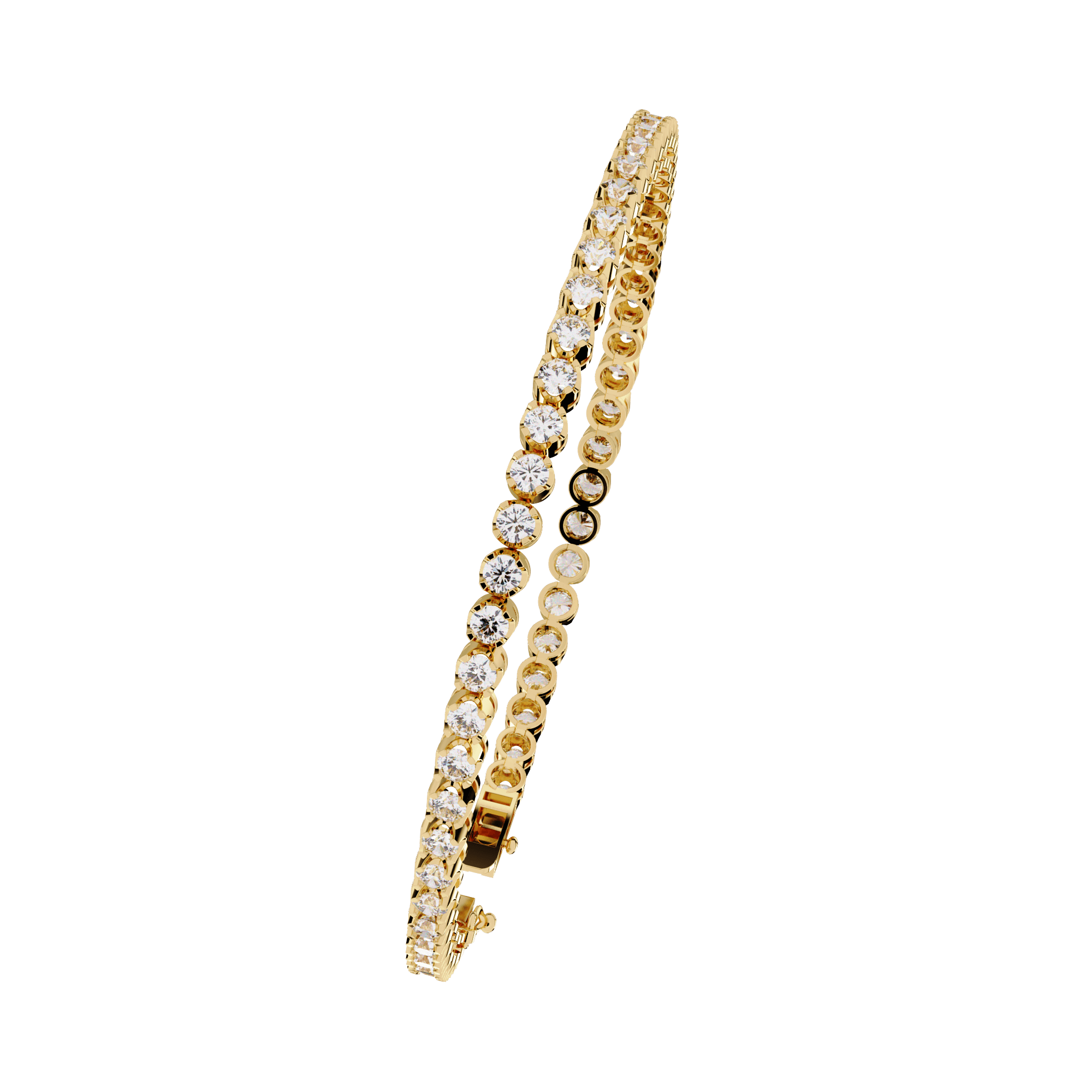
Gold: The Classic Choice of Versatility
Gold is the timeless, traditional choice. Any good diamond tennis bracelet buying guide must cover it in detail.
First, let’s talk purity. Pure 24k gold is too soft for secure jewelry, so it’s mixed with stronger alloys.
- 18k Gold (75% Pure Gold): Offers a richer, deeper color. It’s the standard for high-end European jewelry and is perfect for pieces worn with a bit more care.
- 14k Gold (58.3% Pure Gold): This is our most recommended option for tennis jewelry. It provides the ideal balance of rich color, lasting durability, and accessible value, making it perfect for an active lifestyle.
Now, let’s talk color, an essential topic in this diamond tennis bracelet buying guide.
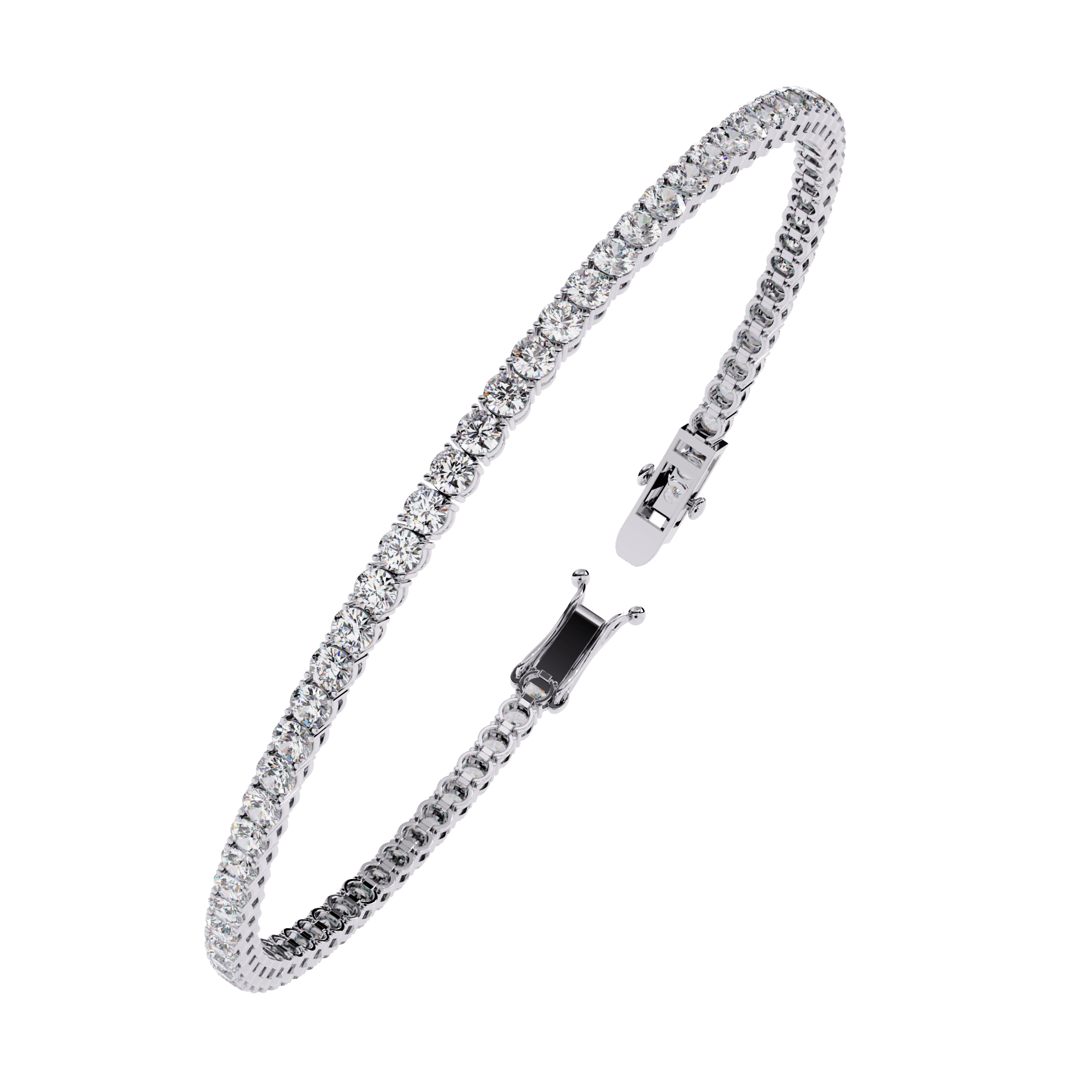
White Gold: This offers the modern look of platinum at a more accessible price. To achieve its color, yellow gold is mixed with white alloys and plated with rhodium.
Our Maintenance Mandate: That bright white rhodium plating is not permanent. To keep it looking brand new, we recommend a simple “spa day” for your jewelry: a professional cleaning and re-plating every 18-24 months. It’s a small step that keeps your investment pristine.
Yellow & Rose Gold: These warm hues offer a stunning contrast that can actually make diamonds appear brighter. With your foundation chosen, it’s time to build the sparkle, a critical step in this diamond tennis bracelet buying guide.
Part 2: The 4C Formula – The Smart Way to Maximize Sparkle
This is where most buyers get overwhelmed, but it’s the most important section of our diamond tennis bracelet buying guide. Cut, Color, Clarity, Carat. The famous 4Cs.
The biggest mistake is assuming you need the highest grade. The secret to buying tennis jewelry is strategy, and this diamond tennis bracelet buying guide is your strategic manual.
This is where most buyers get overwhelmed. Cut, Color, Clarity, Carat.
The famous 4Cs.
The biggest mistake is assuming you need the highest grade in every category. That’s a recipe for overspending.
The secret to buying tennis jewelry is strategy. For a piece with dozens of small stones, the rules are completely different than for a single large engagement ring.
Let’s crack the code.
Cut: The Non-Negotiable King of Sparkle
This is the most important C. Period. When jewelers talk about ‘Cut,’ they mean how skillfully the stone’s proportions have been shaped to return light. A key lesson from this diamond tennis bracelet buying guide is to never compromise on cut.
When jewelers talk about ‘Cut,’ they aren’t referring to a diamond’s shape. They mean how skillfully the stone’s proportions and angles have been shaped to capture and return light. As the GIA (Gemological Institute of America) defines it, Cut is all about maximizing a diamond’s interaction with light.
A mediocre cut is a dimmer switch. An excellent cut is a firework.
A Proprietary Insight: Form a diamond tennis bracelet buying guide, the consistency of the cut across all stones is paramount. One poorly cut diamond can create a “dead spot” and break the continuous river of light. That’s why we meticulously match every diamond in our line jewelry for a seamless and brilliant finish.
Your Action: Never compromise on Cut. Insist on a “Very Good” or “Excellent” grade. This is where your money is most visible.
[Learn More About Diamond Cut from the GIA]
Carat: It’s All About Total Weight (CTW)
Carat is a measure of weight, not size. For diamond tennis bracelet buying guide, you’ll see this listed as “Carat Total Weight” (CTW), which is the combined weight of all the diamonds in the piece.
What truly matters is how that weight translates to the look you want. A delicate 2 CTW bracelet is perfect for daily wear and layering, while a statement 10 CTW necklace commands attention.
The magic of tennis jewelry is that it uses smaller stones, allowing you to get a massive look without paying the exponential price jump associated with a single large diamond.
Color: The Sweet Spot for Smart Buyers
Diamond color is graded by the GIA on a scale from D (colorless) to Z (light yellow).
Here’s an industry secret: you don’t need a D-color diamond.
Once set in jewelry and worn against the skin, the human eye cannot distinguish between a colorless (D-F) grade and the top tiers of a near-colorless (G-H) grade.
The Sweet Spot: G–H Color This is our universal recommendation for tennis jewelry. Diamonds in the G-H range appear perfectly icy-white to the naked eye but cost significantly less than colorless stones.
Choosing a G-H diamond is the smartest financial move you can make. The money you save can be reallocated to a higher carat weight or a more premium metal—a difference you will actually see.
Clarity: The Secret of “Eye-Clean”
Clarity refers to a diamond’s natural imperfections, graded from Flawless (FL) to Included (I).
Your goal is not to find a diamond that’s perfect under 10x magnification.
Your goal is to get a diamond that is “eye-clean.”
Clarity refers to a diamond’s imperfections. Your goal is not perfection under magnification. Your goal is to get a diamond that is “eye-clean.” The Sweet Spot is VS2–SI1 Clarity. This is the smartest advice in our diamond tennis bracelet buying guide.
The Sweet Spot: VS2–SI1 Clarity. These grades are the heroes of smart diamond buying. Their inclusions are so minor that they require a jeweler’s loupe to be seen.
Our Diamond Tennis bracelet buying guide Experience Tip: When assessing an SI1 diamond, always ask to see it face-up and away from harsh spotlights. At our company, every single SI1 diamond is personally vetted by our gemologists to guarantee it is perfectly eye-clean from a normal viewing distance. This is a crucial quality check that separates exceptional jewelers from the rest.
Part 3: The Great Value Debate – Natural vs. Lab-Grown
This is the biggest choice for the modern jewelry buyer.
Let’s be perfectly clear: this is not a “real” vs. “fake” debate. As the Federal Trade Commission (FTC) confirms, lab-grown diamonds are real diamonds. They share the exact same DNA as their natural counterparts—the same fiery sparkle, the same chemical makeup, and the same tough-as-nails structure.
The only differences are their origin and their price.
Natural Diamonds: The Traditional Asset
These are the stones of history and tradition. This diamond tennis bracelet buying guide acknowledges their romantic appeal and legacy.
Our clients who choose natural diamonds are often thinking about legacy. They value the story of the Earth and the long-term, established market for these rare gems.
Lab-Grown Diamonds: The High Sparkle-Per-Dollar Accessory
This is the choice for maximum impact. A lab-grown diamond can be 50-70% less expensive than a natural diamond of the exact same quality.
What does this mean for you?
It means the jaw-dropping 10 CTW bracelet you’ve been dreaming of might now be within reach, for the price of a much smaller 4 CTW natural piece. Our clients who love lab-grown diamonds are thrilled by this equation; they get the bold, beautiful look they want without compromise.
How to Choose? We help with a diamond tennis bracelet buying guide
Ask yourself: Is this piece a financial asset or a personal accessory?
- If you see this jewelry as a future heirloom and a store of traditional value, a natural diamond aligns with your goals.
- If you want the absolute biggest, most brilliant piece of jewelry your money can buy, then lab-grown is the smartest, most logical choice.
[Discover Our Lab-Grown Diamond Jewelry Collection]
Part 4: Checklist From Our Diamond Tennis Bracelet Buying Guide
Use this checklist to shop with absolute confidence. And Help to diamond tennis bracelet buying guide
[ ] 1. Choose Your Foundation (Metal): Platinum for durability, 14k Gold for a balance of value and strength.
[ ] 2. Prioritize the 4Cs Strategically:
- Cut: Excellent or Very Good. No exceptions.
- Color: G or H. The smart-buyer’s sweet spot.
- Clarity: VS2 or SI1. Insist on “eye-clean” verification.
- Carat: The CTW that fits your personal style.
[ ] 3. Decide on Your Origin: Natural for tradition, Lab-Grown for value.
[ ] 4. Always Get Certification: Demand a report from a top-tier lab like GIA or IGI. This is your non-negotiable proof of quality.
[ ] 5. Vet Your Jeweler: Are they providing education or just a sales pitch? A trustworthy partner will stand behind the quality of every single diamond and offer lifetime care advice.
Conclusion: Your Journey to Sparkle Begins Now
Buying diamond tennis jewelry is no longer a mystery. Because this is a Help You diamond tennis bracelet buying guide
Now you have the formula. You have the insider strategies.
You know that a G-color, SI1-clarity diamond with an Excellent cut will look identical to a flawless stone costing thousands more. You can confidently choose your metal and make an informed decision on diamond origin that aligns with your personal values.
The endless circle of sparkle is within your reach.
It’s time to find the piece that will make you feel brilliant for a lifetime.
“We hope this diamond tennis bracelet buying guide has empowered you with the knowledge to shop with confidence.”
